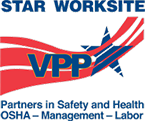 During a recent visit out to California to work on a new and improved Roco/CMC harness, we had the opportunity to visit with Mr. Jim Frank, Founder and Chairman of CMC Rescue.
During a recent visit out to California to work on a new and improved Roco/CMC harness, we had the opportunity to visit with Mr. Jim Frank, Founder and Chairman of CMC Rescue.
For 34 years, Jim has been active with the Santa Barbara County Search & Rescue Team. In 1978, he founded CMC Rescue to provide quality equipment for rescuers. His pioneering efforts in technical rescue have had a substantial influence on the evolution of the products and techniques used today. He currently serves on the NFPA Technical Rescue Committee, the NFPA Technical Committee on Special Operations Clothing & Equipment, the ANSI/ASSE Z359 Committee on Fall Protection, the ASTM F32 Committee on Search & Rescue, and the SPRAT Safe Practices for Rope Access Work Committee. We asked Jim to share some insight with us… particularly on his experience and involvement with the NFPA Technical Rescue Committee over the years.
In our many conversations with end users, we find that the standards are still not clearly understood. Manufacturing standards such as NFPA 1983 increase the ability for the user to make intelligent decisions between various products. I’m also told that they provide the ability for departments to buy with grant money since it is a nationally recognized standard. User standards such as 1006 and 1670 provide a great framework for the knowledge needed to perform rescues. However, they do not necessarily equate to the competence and experience needed to safely and effectively perform a rescue.
NFPA 1983 concerning Rescue Equipment has been updated/changed over the years. Do you think it’s where it needs to be at this time?
Standard 1983 is continuing to grow in coverage and address a wider scope of products used in rescue. We’re now talking about adding litters and patient extrication devices where in the past it was limited to protective equipment for the firefighter or rescuer. However, the effectiveness of 1983 is completely dependent on the consumer making the decision to select “certified” products instead of accepting a product claiming to “meet or exceed” the standard or choosing a non-certified product.
Do you think the NFPA needs to consider adding professional qualifications for emergency escape for firefighters?
In general, no. While training is essential, access to emergency egress should be available the first day on the job. It could possibly be included as part of NFPA 1001 Standard for Fire Fighter Professional Qualifications.
What is the biggest change you’ve seen in rescue over recent years?
An expansion in the number of agencies getting into rescue and a growing interest in developing rescue capabilities in other countries where it has not been a tradition. In the area of equipment…lower stretch ropes, lighter hardware with better performance figures, mechanical belay devices like the Petzl ASAP, Traverse 540, and the CMC MPD. There’s also been some trend toward full-body harnesses. From a business standpoint, there has been an increase of even more off-shore products that are competing on price rather than quality and performance.
If you had to give one piece of advice to rescuers, what would it be?
Continue to hone your professional skills with up-to-date training and regular practice. The rescue technician’s skills are still the most important ingredient in a successful rescue.

 Helpful tips from Roco Chief Instructor Pat Furr:
Helpful tips from Roco Chief Instructor Pat Furr:


